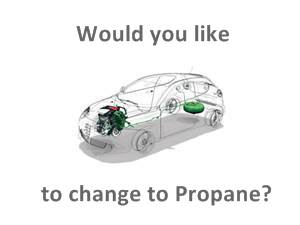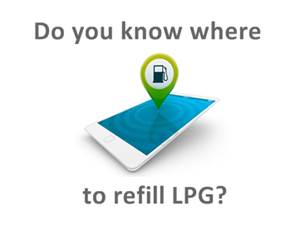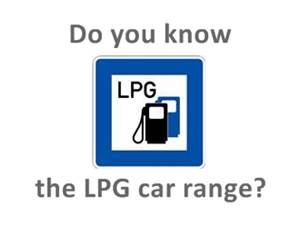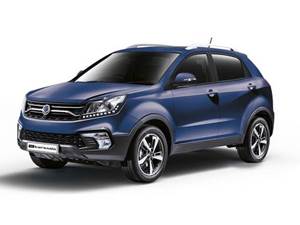
New ssangyong range of cars, suvs, wagons, sedans, trucks prepared to consume LPG / Propane
SsangYong was one of the last players to join the game compared to other companies that started in the 30s and 40s. The original name of SsangYong Motor Company was Ha Dong-hwan, started 1954 by building jeeps for the army of I know. UU
In 1997 the President was launched, a luxury sedan, the first for the company that had previously only built heavy trucks. That same year, the Korean company Daewoo Motor Company bought the controlling stake of the company. The adventure ended in 2000 when Daewoo was forced to sell because he had financial problems. After being watched by several international automakers, SsangYong has seen 51% of its stake acquired by the Chinese conglomerate SAIC (acronym for Shanghai Automotive Industry Corporation) in 2004. Its range has been complemented by other models, such as Rexton ( 2001), Rodius (2004), Kyron (2005) and Actyon (2006).
The range of cars with LPG Autogas offered by the ssangyong brand in USA has been extended with the approval of equipment to retrofit their cars:
A new ssangyong LPG / Propane Model of van in USA usually maintains the same gasoline system as the traditional version incorporating the LPG / Propane equipment
the ssangyong LPG / Propane van has a price slightly higher than the gasoline version but lower than the diesel version
Although it can be established that operating in LPG / Propane mode the vehicle consumes a little more than gasoline, the price of fuel has an interesting saving
The refilling from the supplier is carried out in a time comparable to that necessary for refueling gasoline. The system is, likewise, very simple and comfortable.
Being a cleaner system, catalytic converters, filters, "adblues" are eliminated, which reduces the possibility of mechanical breakdowns. Thus, for example, the service life of the oil increases with what it means for motor care
The first cities begin to limit the access of diesel vehicles, in their restrictive regulations vehicles with LPG have access advantages




We are facing a small urban road with current fashion (4.2 meters long, 1.8 wide and 1.6 high). It is designed and manufactured by the brand of South Korea under the same quality standards to which we are accustomed, to the large number of models of the competition, such as the Nissan Juke 2008 Peugeot or Renault Captur among others. Available in gasoline and diesel engines, it now comes with a truly eco-friendly solution that uses liquefied petroleum gas (LPG) as fuel. Therefore, you can display the ECO tag on the windshield and be free of traffic restrictions in the larger cities. The gas used as a fuel emits practically no pollutant (NOx) and expels less CO2 than conventional gasoline engines. In addition, it has a much lower price (66 cents per liter, currently), pays less in the road tax and benefits from discounts in regulated parking spaces. The use of gas as fuel for vehicles is not something new. We all remember those taxis of the last century that carried the classic butane bottle in the trunk to replace gasoline in their tanks. Tivoli GLP uses a similar system, but much more modern and safe, placing a fuel tank on the spare wheel. Gasoline or gas, indiscriminately The engine is known 1.6 gasoline atmospheric, with 128 HP of power, prepared to feed gasoline and gasoline, indistinctly. It uses the same standard six-speed manual gearbox, which sends force only to the front wheels. This engine is only associated with the front-wheel drive. At the beginning, it always feeds with gas until it reaches its normal operating temperature. A button in the center console, illuminated by LED lights, informs us of the fuel that it uses and allows it to change from one to the other. This feature, with the logo on the tailgate, are the only changes we will find in front of a "normal" Tivoli. In progress Surprisingly silent, its reduced sound level is among the best in the competition. Only the friction of large tires, on 18-inch wheels, increases noise at high speed. Since this variant weighs 124 kilos more, the dynamic behavior suffers, both in gas mode and in gasoline mode. The heaviest load falls mainly on the rear axle through the installation of the LPG tank, which has forced them to increase the adjustment of the shock absorbers, which cause greater rebounding and agitation to overcome the potholes and speed bumps. Brakes and clutch have a strong contact, which must be used, and the smooth steering, with three levels of hardness selectable by a button on the console, has a somewhat artificial key that does not clearly transmit the forces of the wheels. In any case, although it is balanced and plumb on the road, taking turns at high speed is not the maneuver in which the Tivoli feels more comfortable. The six-speed manual has good accuracy, but the first and second lanes are very close to lanes 3 and 4 and it is easy to get lost if the breaks are not marked. It is easy to deduce that its greatest weight is observed in consumption and benefits. The "gas" mode, with its discrete characteristics, is suitable for moving around the city or driving "on the fly". If you want to overtake quickly or need more power to climb a pass, for example, you must change to gasoline and climb above 4,600 rpm to find the 128 horsepower of your engine. Our test, conducted with a quiet ride while respecting the speed limits, was resolved with an average fuel consumption of 6.9 liters per 100 kilometers. The expense increases if we use LPG, reaching 9.0 l / 100 km. However, since it costs approximately half of the gasoline, considerable savings are deducted. A not insignificant aspect is that of its autonomy. Taking into account that the gas tank has a capacity of 47 liters and a LPG of 30 kilos, the sum of both can exceed 1000 kilometers without refueling. Good visibility to the outside, given the height of the car, is altered by the large mirror that prevents vision to the left. The interior space, front and rear, is among the largest in the category, with a virtually nonexistent central tunnel that allows you to move well in the rear seats.
The plastics in the lower panels of the doors and the board are resistant, to the touch they are soft to the touch, but the best thing is that the set is solid and tight. The back of the front seats has elastic bands to hold objects and there are many holes on all sides. Too bad that the steering wheel can be adjusted only in height and not in depth. Due to the LPG tank, the volume of the boot has been reduced from 423 to 327 liters and there is no possibility of placing a spare wheel. There is only one end (limited), but with standard equipment, it surprises. Account, among others, with bizone, USB and Bluetooth 7.0-inch screen, a rear view camera, alarm, upholstery and leather, reclining seat, rain and light sensors, electric mirrors, colored windows, 18-inch alloy wheels ... With a price of € 19,800 and a five-year warranty, Tivoli GLP is a good option to move around cities with future traffic restrictions. It does not stand out for its advantages, but it moves for little money and has an "Eco" label to park. Of course, it is convenient to have located a point to recharge the gas.

 POSSIBILITY OF BEING ADAPTED TO CONSUME LPG
POSSIBILITY OF BEING ADAPTED TO CONSUME LPG





